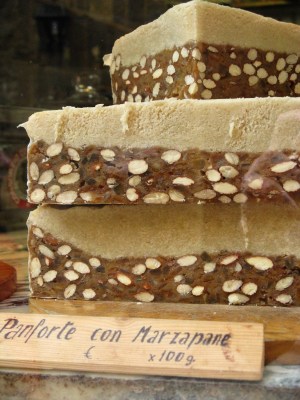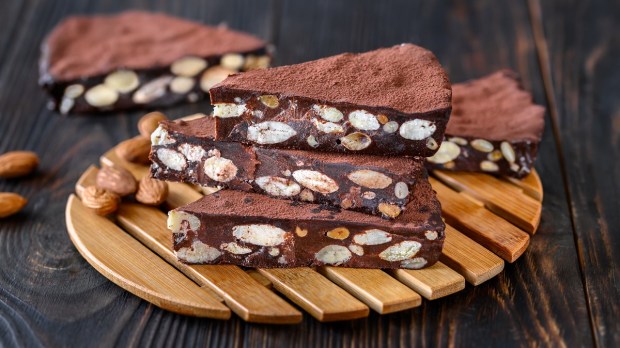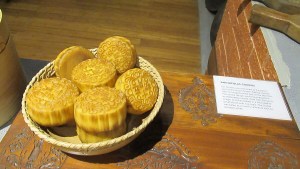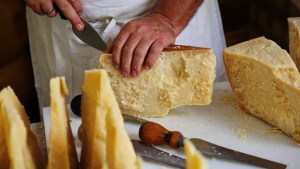Catholics around the world eagerly await for the Christmas period to celebrate the most festive holiday of the year, and food is a big component of that celebration. From Polish kolaczki to Spanish polvorones, the Catholic world counts on a diverse and vast selection of Christmas treats. In the Italian city of Siena, Tuscany, Christmas would not be the same without Panforte, a soft and chewy sweet bread stuffed with nuts and dried fruits.

Unlike its northern counterpart Panettone, Panforte is not cooked in a professional oven but can be easily concocted at home by stirring up dried fruits with nuts and flour, spices, and honey into a pan and later placing the cake mix in the oven for about 40 minutes at 350°.
Panforte, which literally means “strong bread” in Italian in reference to the kick of its spices, goes back to at least the 13th century. According to a local tradition, this Tuscan version of fruitcakes was created by an abbess to serve during banquets with high-profile members of the Catholic church. Documents dating to 1205 preserved in Siena’s state archive describe “breads flavored with peppers and honey” used as tax payments for taxes owed to the nuns and monks of the nearby monastery of Montecellesi — at the time, spices like pepper were a rare commodity and were worth significantly more than they are today.
The birth of Panforte is also associated with the bustling commodity exchange taking place in Siena thanks to the popularity of the local pilgrimage route, Via Francigena, connecting France to Rome. At the time, pilgrims from across the Alps and from the Mediterranean sea were coming through Siena as they walked the Francigena and took exotic ingredients like cinnamon, cloves, and pepper with them. The popularity of this pilgrimage route also explains why Panforte made it well beyond the walls of Siena into southern lands. It is believed that Crusaders headed for the Holy Land carried Panforte with them and used it as a medieval version of energy bars.
Sienese people like to say that to make Panforte you need at least 17 ingredients, one for each of the city’s contrades, the wards that famously battle each other each summer during the “Palio di Siena” horse race. Traditionally, the mix of fruits, nuts, and honey is held together with foglie di ostie — unconsecrated communion hosts — and topped with dusted black pepper.
By 1879, a “white” version of Panforte was created by local bakers to celebrate the visit of the Queen of Italy, Margherita. This “white version” of Panforte, lacking the black candied melon and topped with vanilla icing sugar rather than black pepper, is still served in bakeries under the name “Panforte Margherita.”
In 2014, this beloved Sienese Christmas bread was declared a product of Protected Geographical Indication (PGI) by the European Union, meaning that only sweet breads baked in Siena and surroundings can be labeled as Panforte.
Baking Panforte is one of the specialties of local bakeries, which start taking orders for this centuries-old bread as early as October. By December, different versions of Panforte, each declaring to hold the perfect mix of honey, flour, walnuts, almonds, candied orange, lemon peel, cinnamon, pepper, and cloves are proudly displayed in bakery windows and in the many Christmas markets that dot the Sienese hills in the weeks leading up to Christmas.
Thanks to the internet, Americans can now enjoy this beloved Christmas tradition as well by searching for “Panforte” on e-commerce platforms. Best enjoyed with a glass of vin santo – holy wine – or a strong black coffee.



